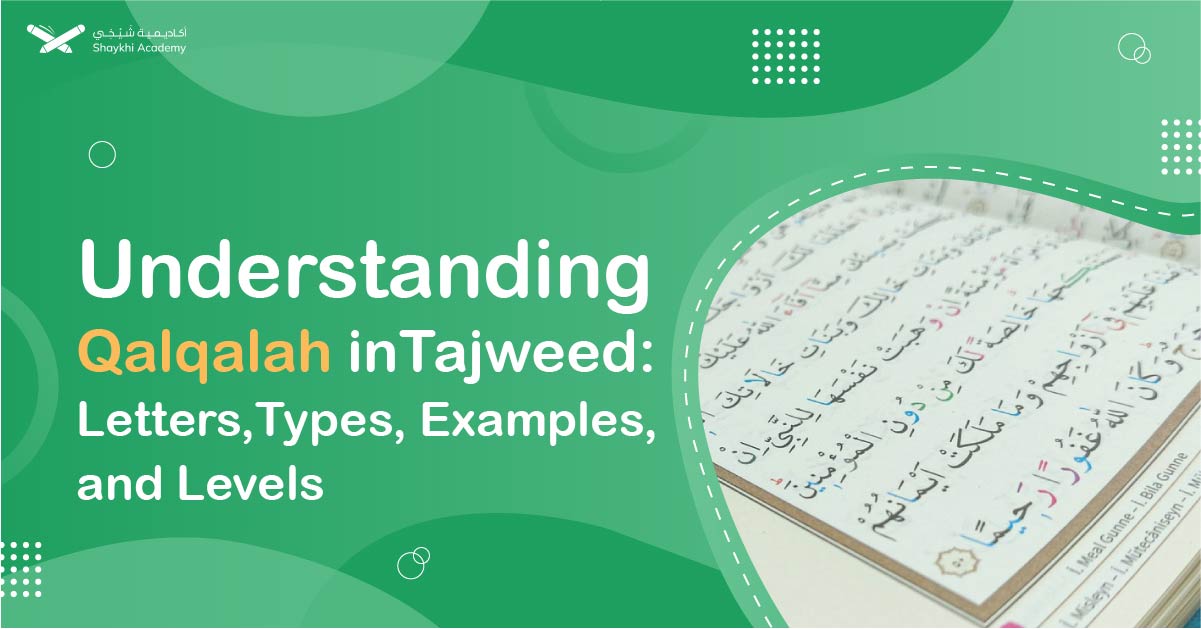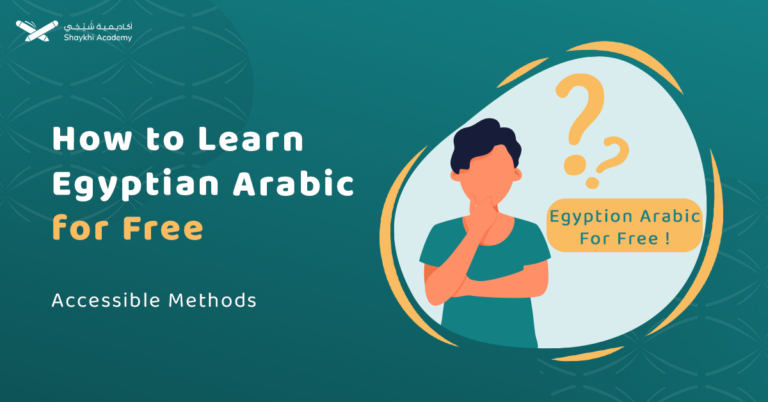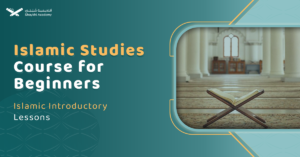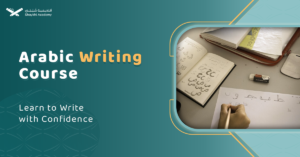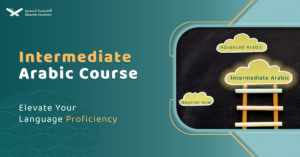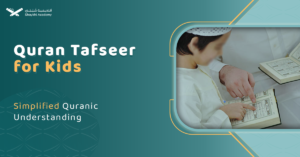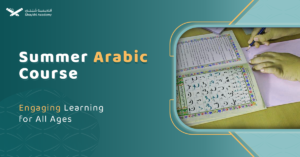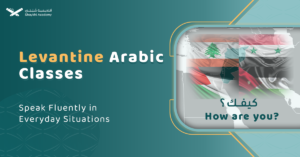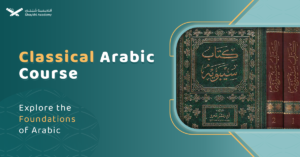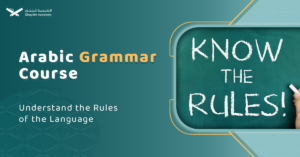Qalqalah is a Tajweed rule in the Quran that creates an echoing sound when one of the five specific letters (ق, ط, ب, ج, د) has a sukoon or when pausing on these letters. The three types of Qalqalah are Kubra (strongest, at the end of a verse with Shaddah), Wusta (middle, at the end of a word within a verse), and Sughra (lightest, anywhere in the word). To master Qalqalah, memorize the letters, understand the types, and practice with a teacher, avoiding common mistakes like adding extra vowels or hamza sounds.
The Holy Quran contains many rules of Tajweed that help us in pronunciation, reading, and understanding meanings accurately, and one of the most important of these rules is Qalqalah.
What is Qalqalah in Tajweed?
Qalqalah is an echoing sound that occurs when we encounter a letter of Qalqalah with a sukoon on it, or when we stop at this letter.
In this case, the letter’s sound is required to come out strongly with a slightly echo in sound
What Does Qalqalah mean in Arabic?
Qalqalah in Arabic means the disturbance and vibration of the sound when pronouncing a consonant so that it has a strong tone, whether the consonant is original or accidental.
What are the letters of Qalqalah?
The letters of Qalqalah in the Holy Quran are 5 letters and they are
(ق – ط – ب – ج – د) They can be combined in the word قطب جد to facilitate their memorization.
And these letters have the attribute of Jahr – preventing the airflow when pronouncing them – and Shiddah – preventing the flow of sound when pronouncing them.
Qalqalah is applied to these letters only in the case of sukoon, but in the case of vowels it is not pronounced with Qalqalah or echo.
for example:
The Almighty’s saying
(وَلَنَبْلُوَنَّكُمْ بِشَيْءٍ مِنَ الْخَوْفِ وَالْجُوعِ وَنَقْصٍ مِنَ الْأَمْوَالِ وَالْأَنْفُسِ)
(And We will certainly test you with something of fear and hunger and a loss of wealth and lives)
The place of qalqalah came in His Almighty’s saying: (ولنبلونكم), it came in the middle of the word in the letter Ba(ب) .
How to identify Qalqalah letters?
If we find one of these letters (ق – ط – ب – ج – د) with a sukun (without a vowel), in this case it is considered a qalqalah letter, and the intensity of the qalqalah varies according to the strength of the letter: the ت is the strongest qalqalah, while the (ق – ب – ج – د) show a progressively lighter jitter.
It must be known that Qalqalah does not occur if the letter Qalqalah contains a vowel (Fatha, Kasra, Damma, or Tanween0).
Types of Qalqalah in Tajweed
There are 3 types or levels of Qalqalah, you must master it in order to be able to read the Holy Quran correctly. These types are as follows:
1. Qalqalah Kubra (قلقلة كبرى)
It is the strongest and clearest type of Qalqalah, and it occurs when one of the five letters (ق-ط-ب-ج-د) comes at the end of the verse and is accompanied by the Shaddah.
As for the method of pronunciation in this type, the reader should stop at the last letter without linking it to the word that follows it and echo the sound of the letter.
In this type, letters or gestures should not be added in place of the Qalqalah.
Let’s look at some Qalqalah Kubra examples so we can understand:
God Almighty says
“وَجَاءَتْ سَكْرَةُ الْمَوْتِ بِالْحَقِّ”
“And the agony of death has come in truth.”
“تَبَّتْ يَدَا أَبِي لَهَبٍ وَتَبَّ”
“Abu Lahab’s hands repented and he repented.”
In these verses we find that their endings are letters with a Shaddah above them, and they are (ب and ق).
2. Qalqalah Wusta (قلقلة وسطى)
The middle qalqalah is resulting from one of the letters of the qalqalah that is at the end of the word but does not have a Shaddah on it, and here the reader should stop at the word.
This type occurs at the end of the word in the middle of the verse.
for example:
God Almighty says in Surah Al-Buruj, verse 20
“وَاللَّهُ مِنْ وَرَائِهِمْ مُحِيطٌ”
“While Allah encompasses them from behind”
Here we pause on the letter “ط” at the end of the word محيط.
3. Qalqalah Sughra (قلقلة صغرى)
It is called the light qalqalah, and it is distinguished from the previous types in that it is not in a specific place in the sentence or word, but rather it can come at the beginning, middle, or end of the word, and the qalqalah is in a proportion or order lower than the strong and middle qalqalah.
Example: the letter ق in the Almighty’s saying
“وَخَلَقْنَاكُمْ أَزْوَاجًا”
“And we created you in pairs”
In order for us to memorize and understand these types more, let us see together some examples of qalqalah from the Holy Quran
Qalqalah examples from Quran
Many examples of Qalqalah appear in the Holy Quran. We will mention some of them:
- Allah almighty in Surah Al-Baqarah:
(وَلَنَبْلُوَنَّكُمْ بِشَيْءٍ مِنَ الْخَوْفِ وَالْجُوعِ وَنَقْصٍ مِنَ الْأَمْوَالِ وَالْأَنْفُسِ)
(And We will certainly test you with something of fear and hunger and a loss of wealth and lives.)
The place of the Qalqalah came in His saying – the Almighty -: “ولنبلونكم”
(And We will certainly test you) And here it is a light (Sughra) Qalqalah as it came in the middle of the word on the letter ب.
- Another example his almighty saying
(فَحَقَّ عَلَيْنَا قَوْلُ رَبِّنَا ۖ إِنَّا لَذَائِقُونَ)
(Then the saying of our Lord has become true over us: Indeed, we will taste.)
The point of concern came in his saying: “فحق”(so it came true)
It is a strong (kubra) qalqalah in the letter ق when it stops.
- His saying – the Almighty:
(وَنَحْنُ أَقْرَبُ إِلَيْهِ مِنْ حَبْلِ الْوَرِيدِ)
(And We are closer to Him than the jugular vein)
The place of the qalqalah came in His saying: (closer) “أقرب”and His saying: (rope) “حبل” . The type of qalqalah is a Sughra qalqalah, as the letter came silent in the middle of the word.
When to apply Qalqalah?
We apply the Qalqalah rule when we find a one of the letters (ق-ط-ب-ج-د) in a state of sukoon (whether the letter has a sukoon sign on it or a sukoon due to a pause), whether that letter comes in the middle of the word or at the end of it, we stop at it and do not give it the movement that it takes when it doesn’t have sukoon.
How to learn, recognize and memories them?
In order to memorize and learn Qalqalah in Tajweed, you can follow the following steps:
1- Memorizing the letters of Qalqalah
You can do this easily by combining them into one word, which is (قطب جد), as it gives you the ability and ease in memorizing the letters (ق-ط-ب-ج-د).
2- Knowing and understanding the types of Qalqalah
Knowing each type and distinguishing between them so that there is no confusion. This is done by learning at the hands of a specialized teacher who can explain these types and help you practice them, which is what Shaykhi Academy offers, as it provides you with lessons in learning Tajweed and its rules, the most important of which is Qalqalah, and what distinguishes it is that the teachers specialize in teaching the Quran. The Holy Quran and Tajweed, as they are Arabs, that is, they are the owners of the original language of the Quran, so you can benefit from that.
Apply now and get a free trial session.
3- Reading and practicing
This is done by reading, repeating, determining the type of qalqalah each time, and following up with your teacher.
Common pitfall related to Qalqalah in Tajweed
There are many common mistakes that learners often make when pronouncing the letters Qalqalah, including:
1. Adding a dhammah, kasra, or fatha:
Scholars usually add a vowel (damma, kasra, or fatha) to the letters of Qalqalah. This leads to adding a movement that is not found in the Quran.
For example, when reciting “قل أعوذ برب الفلق” one should avoid adding the fatha to the letter ق when making the Qalqalah sound in the word “الفلق.”
2. Adding a hamza sound:
A common mistake is adding a hamza sound at the end of the qalqalah. This results in the addition of a letter that does not exist in the Quranic text.
When reading “إن هذا لشيء عجاب”it is not permissible to add a hamza after the qalqalah sound in the word “عجاب.”
3. Extending or lengthening the Qalqalah sound:
The Qalqalah echo should be short and not long, but some beginners make the mistake of making it too long.
4. The pause after the Qalqalah:
Some teaching methods may emphasize the sound of the gurgle by making a short pause after it. However, it is necessary to understand that such a pause is not required.
For example, when reciting “عند سدرة المنتهى,”one should not pause after the qalqalah sound accompanying the letter د in the word “سدرة.”
Quick FAQs
How many types of Qalqalah are there?
There are 3 types of Qalqalah which are (Qalqalah Kubra – Qalqalah soghra – Qalqalah wusta).
How many Qalqalah letters are there in the Quran?
There are 5 Qalqalah letters in Quran which are (ق-ط-ب-ج-د).
Unlock the Path to Quranic Mastery with Shaykhi Academy!
Are you seeking the finest Quranic education right from the comfort of your home? Look no further! Shaykhi Academy stands out as a premier online Quran learning platform, dedicated to providing exemplary education to both children and adults.
Why Choose Shaykhi Academy?
- Connect with highly qualified native tutors.
- Flexible scheduling to suit your busy lifestyle.
- Affordable classes tailored for all levels.
- Accessible from anywhere around the globe.
Discover Our Range of Courses:
- Arabic Noorani Qaida: Lay a solid foundation for Quranic studies.
- Online Quran Classes for Kids: Engaging lessons for lifelong learning.
- Tajweed Rules for Kids: Learn to recite with confidence.
- Quran Hifz for Kids: Step-by-step guidance to memorize the Quran.
- Quran for Adults: Introduce yourself to Quran reading and Tajweed rules.
- Online Arabic Courses: Master the language of the Quran.
- Islamic Studies: A wide range of topics related to Islam, including theology, law, Quranic studies, Hadith.
Don’t Miss Out on Your Chance to Excel!
Whether you’re a beginner or seeking advanced knowledge, Shaykhi Academy can guide you! Book your free trial now and make Ramadan 2024 your Quranic turning point!

Conclusion:
Qalqalah is an essential Tajweed rule in the Holy Quran that involves creating an echoing sound when encountering specific consonants with a sukoon, or when pausing at these letters. The Arabic term “Qalqalah” means the disturbance or vibration of sound, producing a strong tone whether the consonant is original or incidental. The five Qalqalah letters are ق, ط, ب, ج, and د, which can be memorized using the mnemonic “قطب جد.” These letters prevent the airflow and sound flow when pronounced and apply the Qalqalah only in the presence of a sukoon.
There are three types of Qalqalah: Qalqalah Kubra (the strongest, occurring at the end of a verse with a Shaddah), Qalqalah Wusta (middle strength, occurring at the end of a word within a verse), and Qalqalah Sughra (the lightest, occurring anywhere in the word). To master Qalqalah, it is vital to memorize the letters, understand the types, practice with a teacher, and avoid common pitfalls such as adding unnecessary vowels, hamza sounds, or pausing incorrectly. Consistent reading, repetition, and guidance from knowledgeable instructors can significantly improve one’s proficiency in applying Qalqalah correctly.
